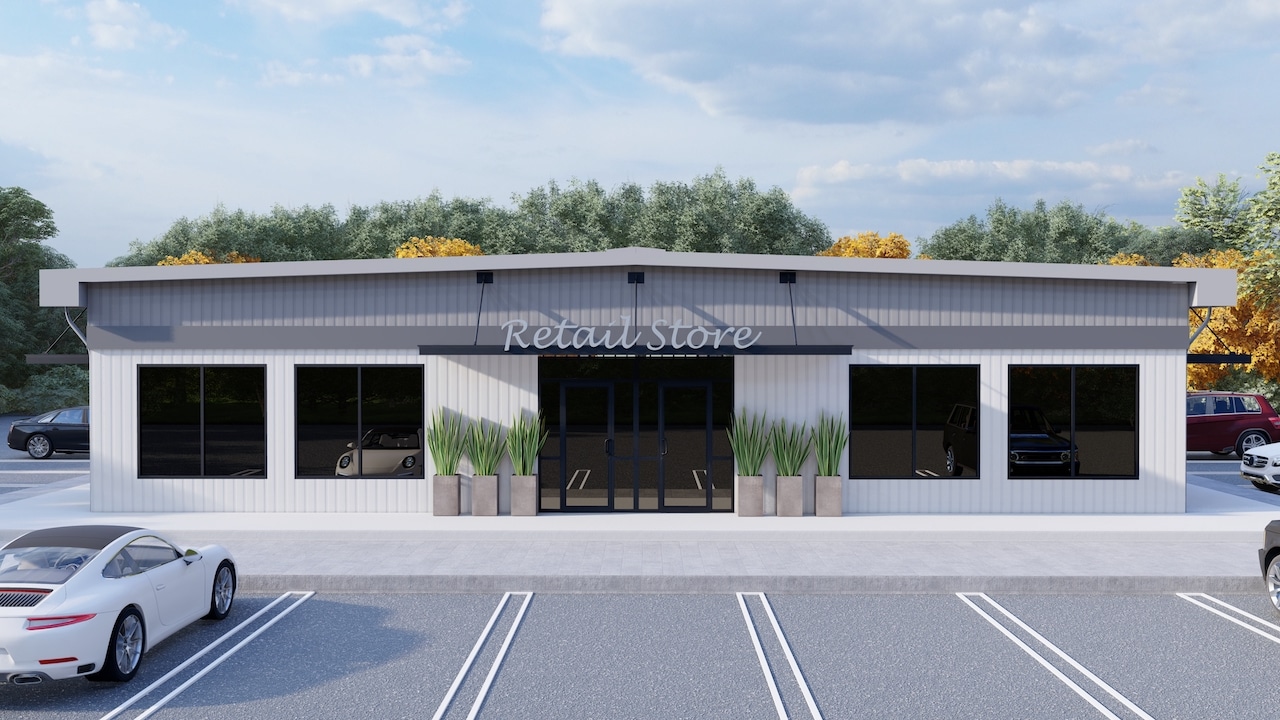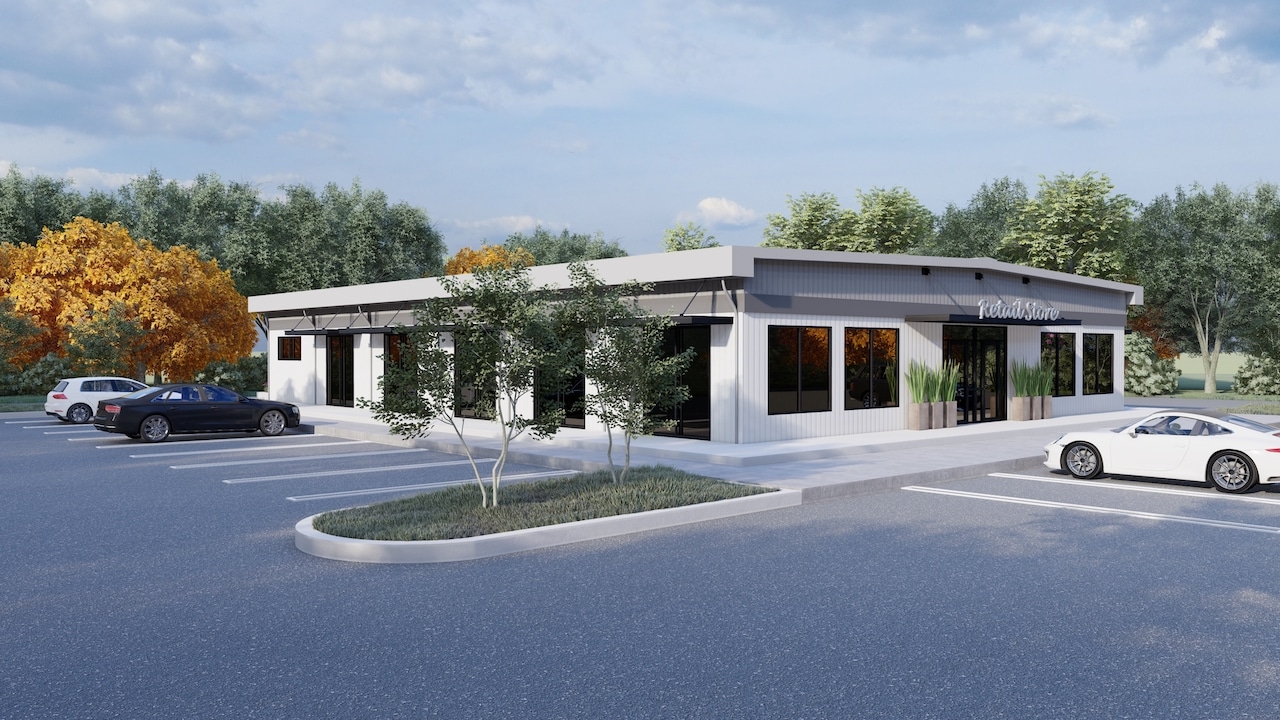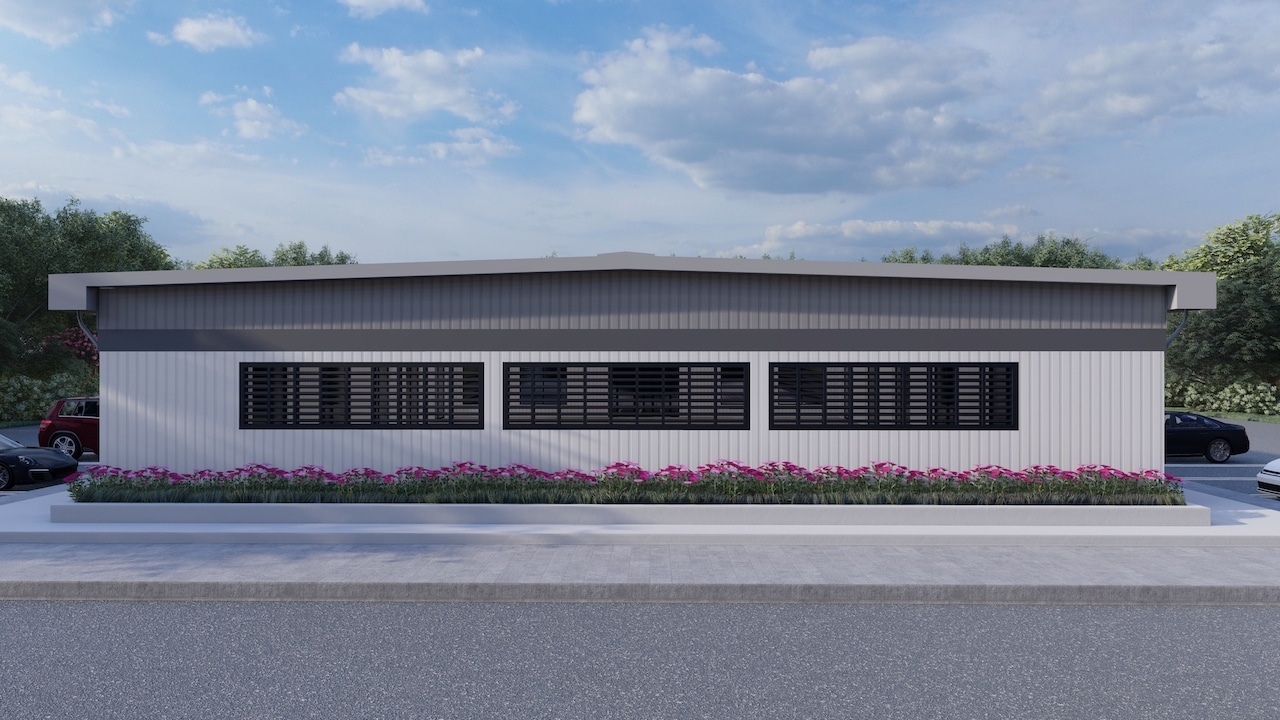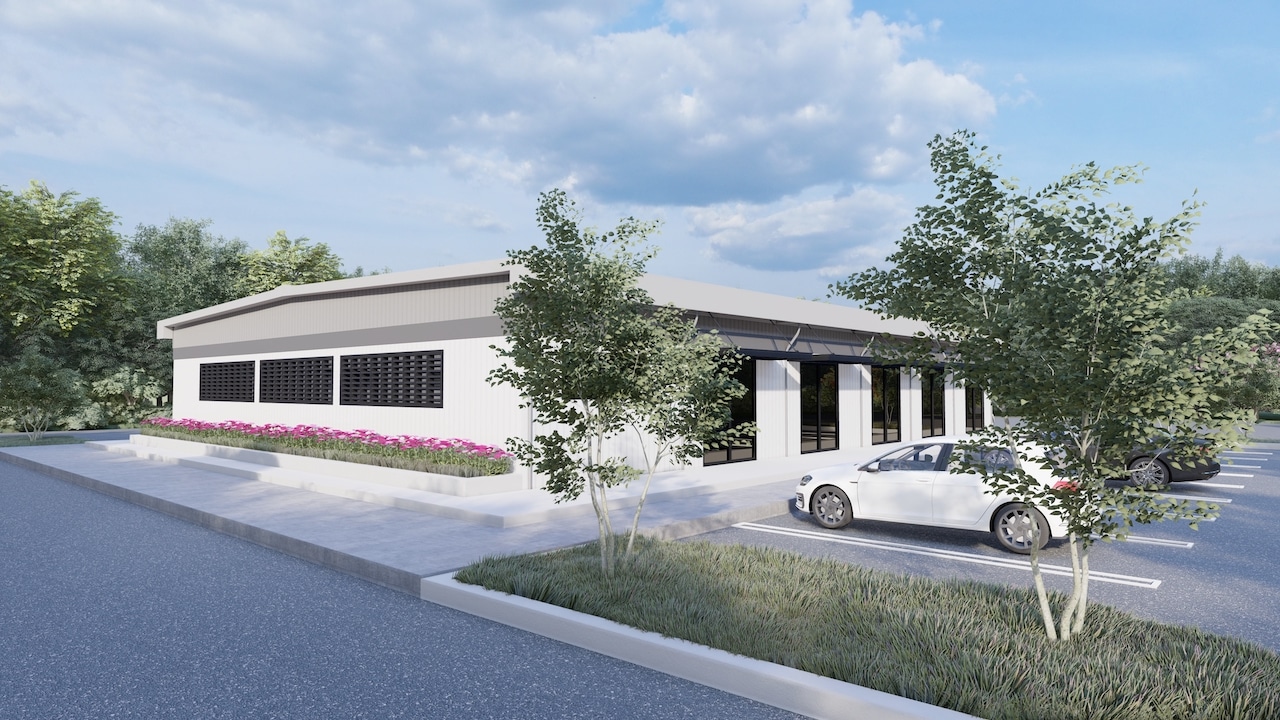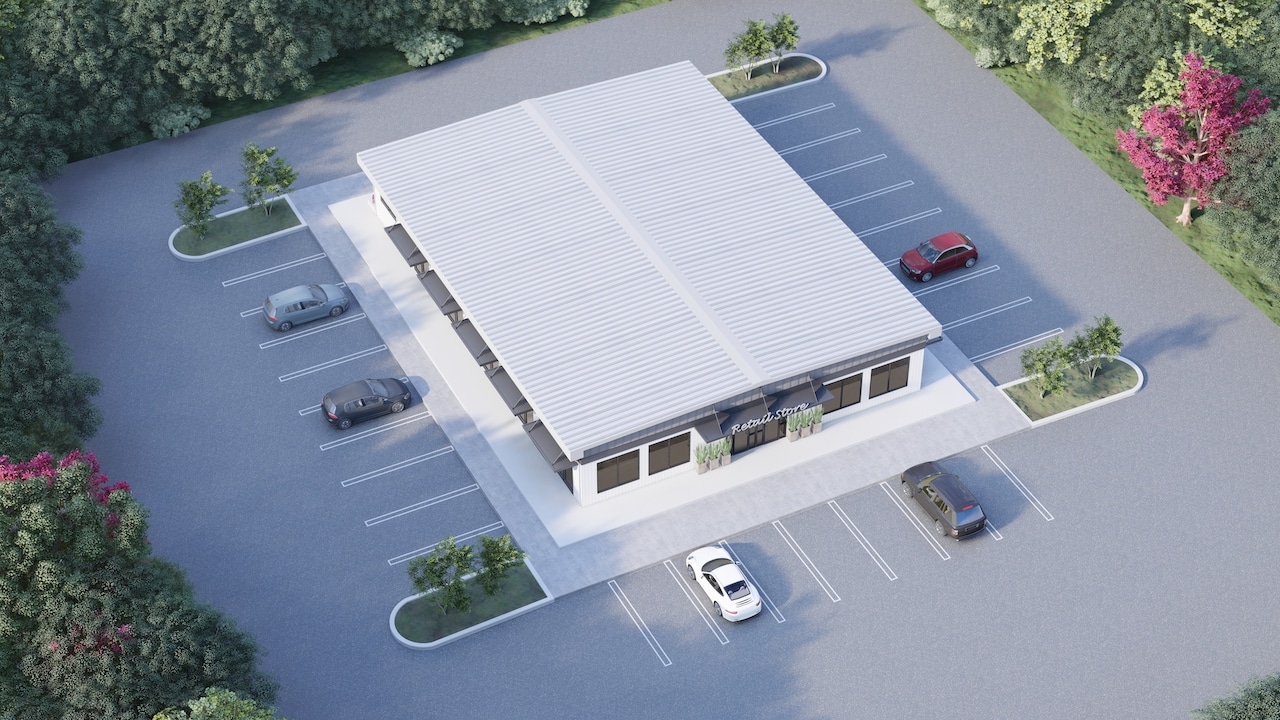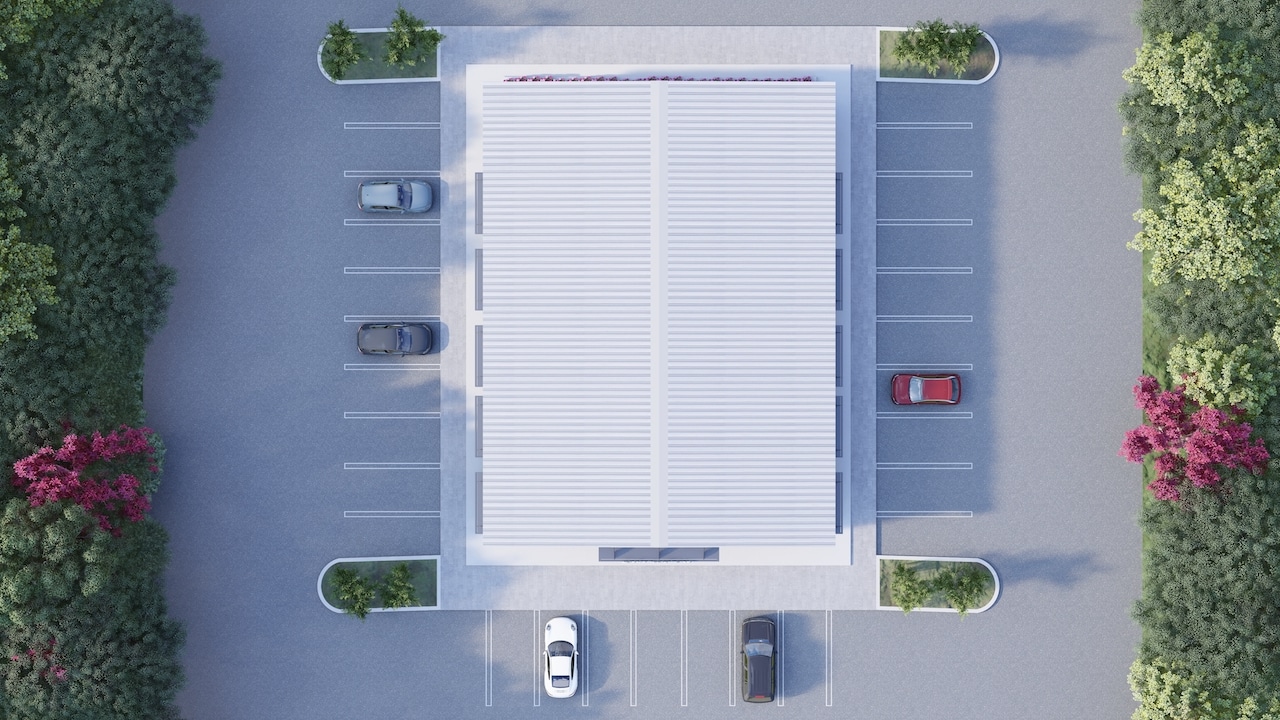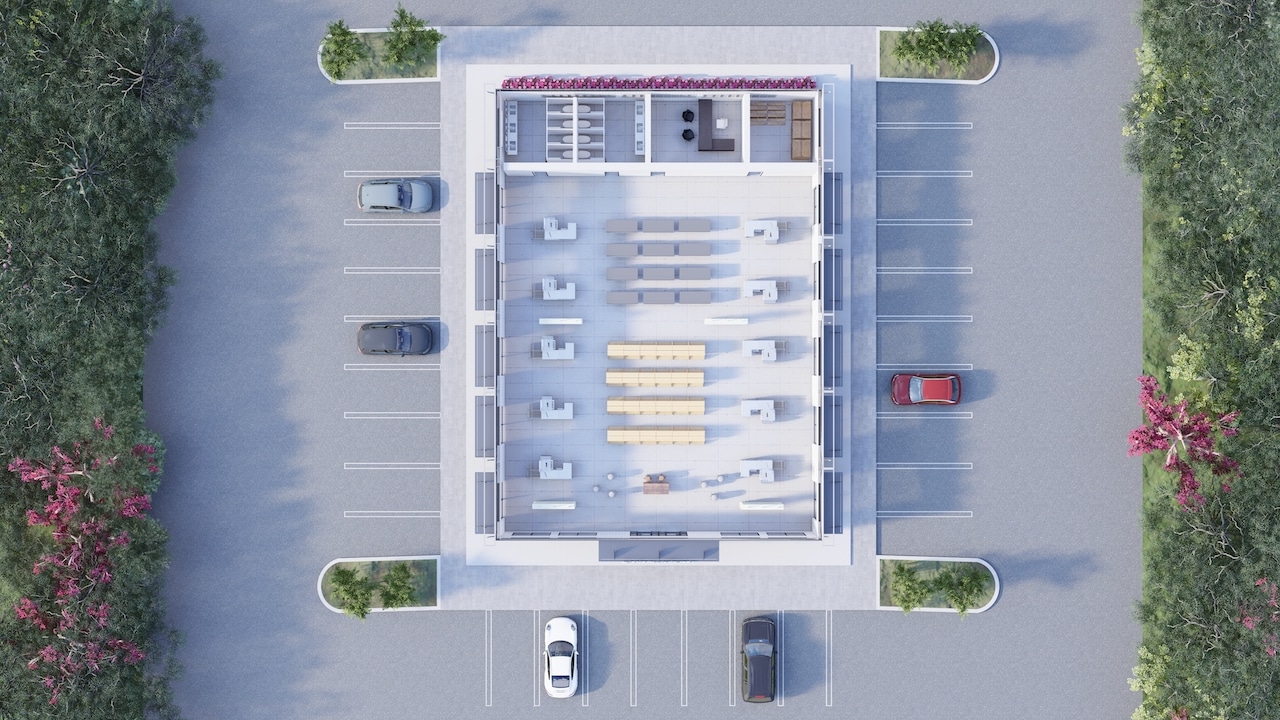If your business needs more space, a new location, or a pop-up store, and you’re concerned about construction costs, you’ll want to learn about modular retail buildings. A modular retail building can easily solve your problem without breaking the bank.
As you are about to learn, you can save money, time, and effort by investing in a modular retail building.
What's In This Article
Popular Sizes
What Is a Modular Retail Building?
A modular retail building is a prefabricated building that you can use as retail space. Modular retail buildings are just as well-made as their conventional counterparts, yet they come at a significantly lower cost. That means that you can have a lot more space for the money when choosing a modular retail building as opposed to conventional construction.
With a wide variety of floor plans to choose from, using a modular retail building to create or add space for your business is a smart move. It’s faster, cheaper, and in some cases, more reliable.
Common Names You Might Hear These Buildings Referred to as:
You may have heard about modular retail buildings before but under a different name. Some folks like to call them prefabricated buildings, which is somewhat accurate since they are constructed in advance, away from the property.
Types of Modular Retail Buildings
There are two main types of modular retail buildings: temporary and permanent. Here’s what you should know about both.
Temporary
Temporary modular retail buildings are great for companies that only plan on doing business in a certain location for a limited amount of time.
Temporary modular retail buildings can be extremely useful because they allow you to set up a building in a short period of time without any permanent costs. In other words, you can get in and out for a remarkably low cost.
In business, especially in retail, it’s important to have the ability to move fast. By using a temporary modular building, you will give yourself more built-in flexibility. It will make it easy to do business in multiple locations. You’ll be able to work in different areas while spending less money to do it.
Remember, while the buildings and building sites may be temporary, the growth that they can contribute to your business will be permanent. The more money you make from every site with a temporary modular retail building, the faster your business will grow.
Lease and Co-op Options
In some cases, a lease or co-op agreement might be a better option than buying a modular building outright. Choosing the best arrangement for you depends on the nature of your business and how long you plan on doing business in the same place.
Leasing is sometimes cheaper in the long run, and just like an apartment or condo, you can also lease to buy. With a lease, any damage that may come to the building becomes your landlord’s problem, not your own. It is also a more environmentally-friendly way to do business, as the landlord can reuse the space after you leave instead of demolishing it.
Especially for project job sites, leasing is ideal. There is no need to commit to a traditional building or its construction, and after the project, the modular unit is no longer your concern. Though you can choose to buy and sell buildings as you require, this is not always an efficient business plan. Leasing provides a temporary solution to time-specific projects that would otherwise cost a substantial amount.
For instance, if you buy a modular building for a project site, you must contend with its maintenance and upkeep. Once the project is complete, you will need to decide what to do with the building. If you intend to keep it for future endeavors, you will have to organize its transport and storage until the next project. However, if you choose to rent or lease, you no longer have to worry about long-term costs or fees.
Cooperative purchasing agreements are advantageous, as they hasten the bidding process and can be used to contract or relocate a modular. Often, government or school organizations will use co-op options to lower the price of their temporary space. A co-op can help you receive more worth for the square footage of your building.
When you lease a modular building, you won’t own it, but you can utilize it. If you don’t need the extra space for very long, leasing is the perfect way to expand your business temporarily. You can save money on the price and upkeep of a building, and you won’t have to go through the headache of selling the unit once you no longer need it.
Estimated Length of the Building’s Life
The average lifespan for a modular building ranges between 25-30 years, which isn’t bad, considering it’s mobile. Although it is possible to move a temporary modular building, it can be expensive.
Permanent
Permanent modular retail buildings usually have stronger foundations because they are meant to stay in the same place.
Keep in mind it’s usually not worth investing in a permanent foundation that’s filled with concrete unless you’re going to commit to a permanent modular retail space.
Finance Options
You’ll have a number of finance options available to you when purchasing a modular retail building. These buildings are good investments because they can bring in a lot of money when when they are in the right location.
Something to remember about modular retail buildings is that the location is everything. The location determines how much money your retail space can make for you. You can take out a loan or pay for it outright.
Estimated Length of the Building’s Life
Like other modular buildings, a permanent modular retail building can last more than ten years.
Why Modular Retail Buildings?
Modular buildings are cheaper and faster to build. Plus, they don’t leave as much of an impact on the environment. For businesses looking to start expanding into retail markets in different areas or set up a pop-up store, a modular retail building just might do the trick.
Speed
Speed is perhaps one of the biggest advantages associated with modular retail buildings. The time it takes to construct a modular retail building is much faster than it would take to construct a building conventionally. Building a modular retail building takes about a week. It’s faster because they build it within a factory instead of on-site by a conventional construction team.
Environmentally Friendly
Modular retail buildings don’t generate nearly as much waste as traditional construction methods because the construction is more exact. For manufacturers, producing a modular is routine, whereas construction companies build many different kinds of houses with more unique circumstances. This makes modular buildings a popular option among companies that are conscious of their environmental footprints.
High-Quality Standards
When it comes to modular retail buildings, there are high-quality standards in place. The standards that these buildings are held to are exemplary. If you are interested in buying a modular, you should review these standards as outlined by the International Code Council and Modular Building Institute. One of the most important things to remember about modular retail buildings is that despite being cheaper, the quality is exceptional.
Flexibility
Modular retail buildings are arguably much more flexible than traditional structures. These buildings are customizable and potentially portable. While you can take a temporary modular retail building and reconstruct it somewhere else very conservatively, you would have to pay much more to move a regular construction. In many cases, moving a store that wasn’t built modular is either physically or fiscally impossible.
Cost Savings
The cost savings associated with modular retail buildings have made them exceptionally popular among businesses of all sizes. For one thing, the overall price is often negotiable. You can also find a suitable structure based solely on your price range that will still be up to code and provide everything you need for your business.
Overhead costs are also lower than if you were to lease or buy a more traditional building. These lower costs include the reduction of site downtime, as there is no need for production to halt while you wait to secure proper housing for your operations. For some structures, you can acquire a tax depreciation. Modular buildings can sometimes fall under the realm of “equipment” instead of the traditional “stick-built” buildings, which affect how you do your taxes.
The cost of building a brand-new structure is no longer an issue, and neither are all the costs that come with construction. For instance, any weather-induced damage that could happen in a traditional building site will not apply, as the manufacturing of most modular retail buildings takes place indoors.
Cost for the construction crew, equipment, and engineers are also nonissues because you can pick and choose from a line-up of finished units. Even if you purchase a building that is not complete, assembly is faster and more efficient than a more permanent building and still saves on construction costs. It also reduces the risk of worker injury, which could slow down production time and cost you more resources.
Along with customization for your needs, modular retail buildings also standardize their specifications for building codes. This standardization is particularly helpful if you are using multiple temporary spaces for specific jobs. It allows you to save money and time when you don’t have to repeat a request for your exact standards.
More Favorable Depreciation
Modular buildings tend to have more favorable depreciation than traditional buildings. This means that you’ll benefit more from your investment over time than if you were to pay for a conventional building.
Pros
Modular retail buildings are packed with pros:
- They’re cheaper
- More environmentally friendly
- Faster to build than conventional structures
- Safer to build
- High-quality standards
- Great versatility
- Can be customized
- Potentially portable
- Favorable depreciation
- Already complete and available
Cons
The only major cons to speak of concerning modular construction are the following:
- Restricted in terms of size
- Less appealing aesthetics
- Not able to be completely user-specific
- Sometimes difficult to handle or transport
- Public perception leads to low opinions
How Much Does a Modular Retail Building Cost?
You have probably gathered that modular construction is less expensive than conventional construction by now. The cost of a modular building depends on the number of square feet, customization options, and the type of foundation you choose.
Size
The size of your building will determine the cost. You can use the aforementioned price range to keep manufacturers in check when asking them about pricing options. On average, you can expect to pay anywhere between $35 to $100 per square foot.
Quality of Materials
The quality of the materials that you use can also have a huge impact on the price of a modular retail building. While you can pay less money by opting for cheaper materials, you’ll want to stick to high-quality materials if you are planning on using the building for a long period of time.
Most modulars are built with a combination of either concrete and steel or wood. Steel would be the cheaper option between the two.
Modular Retail Building Options?
Now that you know more about modular retail buildings, you should take time to look at the average sizes that manufacturers offer. Most of them tend to stick to a general range of sizes, which means there are many standard sizes to choose from.
Typical Widths
The typical width for a modular retail building is between 12 and 13 feet. With a building that’s 12-13 feet wide, you’ll have plenty of space.
Certain manufacturers can construct a modular retail building that is 14 feet 9 inches or 15 feet 9 inches wide. It all depends on your own personal preferences, storage needs, display needs, amount of foot traffic, and what you need to use the building for.
Typical Lengths
The average length of a modular retail building is around 60 feet. If you have specific needs, you can find some manufacturers that are willing to construct a modular retail building that is 72 feet in length.
Typical Heights
Due to state, federal, and local regulations, the maximum height for a modular retail building is 13 feet 6 inches. It’s difficult to get them to be any higher because of the regulations concerning the size of what can be legally transported in the United States. These regulations govern the maximum height of any vehicle and its cargo.
Custom Designs
With a wide variety of custom designs available, modular retail buildings are extremely popular.
You can customize almost anything when it comes to modulars, including the floor plan, divider walls, bathrooms, and more. Keep in mind that custom modular buildings can cost more money per square foot.
A modular retail building with a custom design will attract more attention, or in other words, more customers to your business.
Exterior Design
The exterior design of a modular retail building can be clean and plain or more detailed according to preference. It all depends on your own specific requirements and the flexibility of the manufacturer.
For the exterior, you can customize various aspects that will define the look and feel of your building. Be sure to take roof lines, color, and ceiling height into account. Businesses can make their modular buildings more attractive by adding awnings.
Foundation Type
The type of foundation that a modular retail building has depends on whether that building is intended to be permanent or temporary.
The foundations used for permanent modular retail buildings are just as effective as the ones you will find underneath conventional structures. This means that there is no reason whatsoever to doubt the integrity of a modular retail building’s foundation if it is permanent.
Overall, several different methods exist for building a foundation for a temporary or permanent modular retail building. Some modular retail buildings, for example, are built with precast blocks. Precast blocks have piers that hold the building up. The blocks can be removed very easily and without leaving much of a trace on the ground. As such, precast blocks are a desirable option for businesses that need temporary buildings.
When choosing a permanent foundation, the builders will install a stem wall that rises several feet above the ground. The stem wall will be filled in with concrete to ensure strength and stability.
Permanent foundations are the most expensive option. That said, they are the strongest, most dependable, and long-lasting of all.
Alternatively, you can opt for dry-stack masonry walls. These walls are constructed from CMU blocks that are held together by a mixture of concrete and mortar. This option is more affordable than a permanent foundation.
Additional Factors to Consider
There are some additional factors to consider when intending to purchase a modular retail building. The more you know before you buy the building, the more value you’ll get out of the experience.
Although modular retail buildings are significantly less costly than conventional structures, they still represent a substantial expense. This means it’s important to gather as much information as possible before making a purchase.
Remember, modular buildings aren’t right for everyone. Whether it’s the expense of the functionality, they aren’t a solution for every particular business. Sometimes, a pop-up store would be less advantageous than having a permanent store location. It’s all about doing proper market research and understanding your own needs.
Site Location
The first factor to consider is the location of your building site. In many cases, you will find that when it comes to sites that are unsuitable for conventional buildings.
you can construct a modular building much easier
Ideally, the location of your building site should be conservatively priced and inexpensive to maintain. Of course, it should be in a strategic location near your customer base. It doesn’t do any good to tuck a modular retail building away someplace where customers won’t see it.
When evaluating a location, think about it in terms of the foundation, utilities, connections, and ground type. These are all essential factors to consider.
Shipping
It’s worth asking multiple manufacturers. That way, you can compare shipping costs until you find a manufacturer that’s willing to work with you on the price of shipping. Delivery costs range between $3,000-$12,000.
Whenever thinking about buying a modular retail building, be sure to incorporate average shipping costs with the price of the structure and the foundation. If your budget only allows for the price of the building and the foundation, you don’t want to run out of money by the time you have to pay to ship the building.
Complexities
The complexities of modular construction are driven in part by the demand for customization. The level of customization desired can make a modular building more complex.
Building sites and shipping costs aside, there are other complications to consider as well. For example, you will need to look into the local regulations in your area to see if there’s going to be any red tape.
You should at least expect to acquire a building permit and get clearance from local zoning authorities to move forward with the build.
If you run into any complexities that you are unsure how to handle, be sure to get in touch with a qualified manufacturer and ask them about it. A knowledgeable manufacturer can help you cut through that red tape and get everything in order so that you can move forward with the build.
FAQs
If you still have additional questions, this FAQ section just might have the answer!
Do All Modular Retail Buildings Look Alike?
While it’s true that most modular retail buildings share certain similarities, you can customize them to ensure a unique look. However, some aspects, like their maximum sizes, generally remain the same.
Do Modular Retail Buildings Look Temporary?
A plain modular retail building may look somewhat temporary, which is why most people choose a custom design. With a custom design, your modular retail space won’t look temporary, especially if you have a permanent foundation.
For the most part, modular retail buildings won’t look temporary unless you know what to look for. For example, a temporary foundation constructed from precast blocks can make a building look temporary.
What Factors Should I Consider When Choosing a Modular Retail Building Company?
If you’re in the market for a modular retail building, look for a manufacturer with a strong and long reputation for quality. Another factor to look for is dependability. Just because you find a manufacturer with a reputation for producing structurally solid buildings doesn’t mean you want to have to wait for a year to get one.
Another factor to consider is price. When you’re looking at the price, be sure to compare it against the value you’re getting in terms of quality and dependability.
How Is Modular Construction Different From Traditional Construction?
Modular construction differs from traditional construction in that the actual building process takes place away from the building site. Modular retail spaces are prefabricated, shipped, and installed, whereas traditional buildings are constructed on-site with a large team of workers.
What’s the Difference Between Modular Retail Buildings and Prefab Retail Buildings?
The biggest difference between modular retail buildings and prefabricated retail buildings is that modulars encompass an enclosed space.
Prefabricated, as a term, can refer to virtually any individual pre-made component in the modular.
Generally, when it comes to prefabricated construction, the wall panels are built separately. With modular construction, the building is constructed and put together in sections.
How Long Does it Take to Construct a Modular Retail Building?
The actual process of constructing a modular retail building only takes about a week on average. Keep in mind, that’s how long it takes to construct the building itself. The entire process can take several weeks or a couple of months.
When evaluating the time it will take to build a modular building, consider the time it will take to purchase the land for your building site, acquire permits, prepare the site, and design the building. Making decisions on the design of the building can take time unless you already know exactly what you want.
It is customary for the builder to prepare the site and ensure that it is ready for the installation of the building itself.
The more you have figured out ahead of time, the faster everything will go. If you already own the land, have a permit, and have a clear idea of what you’re looking for in terms of design, it won’t take long to get the building ready and in place.
Retail buildings can take anywhere from 22 to 26 weeks to create using conventional construction methods. Modulars only take about a week to build, although the foundation can take 4 weeks to put in place.
Can a Modular Retail Building be Eco-Friendly or “Green”?
Modular retail buildings happen to be eco-friendly by nature. Compared to structures that are built using conventional construction methods, modular retail buildings are much less wasteful which means they are gentler on the environment.
The manufacturers that produce modular buildings know exactly how much material to use because it’s routine. Construction crews generate a lot of waste and produce more pollution comparatively.
Instead of having trucks driving out to your building site every day over the course of several months or a year, it generally takes only one to two trips to put a modular building into place and get everything installed.
By making a commitment to modular retail buildings, you can make a huge difference in the world. Your company will be greener, and the planet will be too. It can also make for a great selling point to your customers! Case in point, a modular and energy-efficient Starbucks facility that was built in only six days has been demonstrating how modular construction can be environmentally friendly.
Do modular retail buildings come with bathrooms?
One of the biggest misconceptions about modular retail buildings is that they have no bathrooms.
That’s not true. Modular retail buildings can include prefabricated bathrooms. It all depends on the buyer’s preferences. Just ask the manufacturer about adding a bathroom when you call to ask for details.
Why do organizations buy modular retail buildings?
Organizations buy modular buildings because of their practicality. These buildings cost less, take less time to produce, and stand the test of time!
Modular buildings have made some great strides over the years as they have overcome misconceptions that were holding people back. Today, it’s much more common for a business to construct a modular retail space rather than a conventional structure that costs tens or even hundreds of thousands of dollars more.
In the end, you get what you pay for. When you pay for a modular retail building, you get value on the initial and long-term cost as well as the profitability of the building itself.
Who Should I Contact If I’m Interested in a Modular Retail Building?
Now that you have all of the information, it’s time to make a decision. If you decide to buy a modular building, you’ll need to get in touch with a qualified manufacturer and get the ball rolling.
You must also ask permission from your local planning office before you set up your modular retail building. If you don’t own the land upon which you want to place your expansion, you will have to get permission from the landowner. If granted, you will also have to contend with several other factors, such as the environmental impact, highway access, and the appearance of the building itself.
If you plan to use a temporary unit for a short time, you will have to prove that this limited use will not cause direct environmental harm. You must also account for highway access so any workers can easily arrive at the space. Once you receive approval from the planning office, you can contact a manufacturer to purchase or lease your unit.
There are plenty of modular manufacturers to choose from. Try contacting several of them, and be sure to look at their reviews before making a decision.
